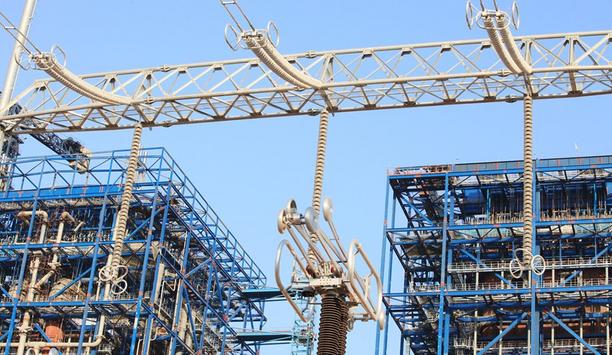Those responsible for the specification of products which go into new modern buildings have been asking for safe, approved cabling, which play a critical part in electrical supply systems.
The number of fires in high-rise buildings in Europe and the Middle East have brought the issue of quality of products for fire performance circuits into sharp focus, not least the Grenfell disaster.
Meanwhile, new buildings become increasingly complex, with the use of new materials and the designs of many requiring complex electrical systems to support security and fire safety. New and refurbished buildings such as hospitals, schools, shopping malls or airports, may have complex addressable loop fire alarm systems which provide information on individual detectors. Conventional systems only provide information about specific circuits or zones.
Indicating exact location of fire, fault
For critical alarm circuits in buildings where large numbers of people move about there can be no greater priority than safetyThe addressable systems feature a fire control panel which receives information and status reports from each device, indicating its exact location and if there may be a fire, a fault, heat or contamination. For critical alarm circuits in buildings where large numbers of people move about – many of whom can be vulnerable – there can be no greater priority than safety.
The cabling chosen for these systems is therefore critical. If the power to these alarm systems fails because the cabling does not meet the required performance, then the information available for fire and rescue services is directly affected and with it, the chance of finding people who may be in the building.
To meet these design challenges, and with the inquiry into the Grenfell disaster still ongoing, it is the use of the very latest technology and science that is taking enhanced fire performance cabling onto a new level.
Safe and compliant cable products
Decision-makers in the supply chain want reassurance that the products they are specifying are safe and compliant, meeting all recognized specifications. Calls have been made by the Approved Cables Initiative (ACI) for all cable being used in the UK to conform to relevant British, European or international standards amid increasing concerns about the volume of non-approved cables coming onto the market.
Installers have welcomed the development of a new generation of fire performance cabling
Installers have welcomed the development of a new generation of fire performance cabling which ensures critical fire-safety circuits can continue to operate in the event of a fire from 30 minutes up to 120 minutes.
The standard and enhanced cables in the Total Fire Solutions range are tubed, making them a welcome product for contractors with ease of installation. They are all UV stable and they all come with a hard insulant to resist any fault generation over time. These cables meet all relevant industry standards including ISO 9001 and is approved by the leading industry organizations nationally and worldwide including BASEC and LPCB.
Carrying out fire risk assessment
For the fire and rescue services, the continuity of power means they can continue to read fire alarm system information which can direct them to the seat of the fire and help to locate people who may be in the building. Responsibility for choosing the right system lies with the ‘responsible person’ under the Regulatory Reform (Fire Safety) Order 2005 in business or any other non-domestic premises.
This will be the owner, employer, landlord, or may be the facilities manager or building manager. As the responsible person, he or she must carry out a fire risk assessment of the premises and review it regularly and put in place and maintain appropriate fire safety measures. Ultimately, the responsible person faces a fines or jail if they fail to follow these measures and there is a fire.
 |
| For some buildings, it is crucial to select the highest quality products to meet the most rigorous third-party tests and real-life fire scenarios |
Any items or products which go into these fire safety systems must be covered by standards set by national, European and international bodies such as British Standards. These will certify that when needed these products will perform their function and operate as expected in real life fire conditions.
Ensuring cables meet fire safety standards
In support of these standards, cable industry bodies provide testing regimes to ensure that different types of cable are fit for purpose and meet these standards when tested in fire conditions. For installers, or those procuring cables, there is a need to check the cable when it arrives to make sure it is exactly what was specified.
Instances of unsafe non-approved cable continue to come to lightFor some buildings, it is crucial to select the highest quality products to meet the most rigorous third-party tests and real-life fire scenarios. These include environments such as hospitals, schools and care homes where older people and children move about.
Specifiers looking at new large public sector projects such as hospitals should refer to BS 8519 for the electrical supply, and the most relevant cabling system.
Counterfeit Flexible Cords campaign
Instances of unsafe non-approved cable continue to come to light. Unsafe flexible cord, intended for use in domestic and industrial applications, has been found on sale in the UK recently, prompting the ACI to issue a fresh alert to the electrical supply chain. The latest find of sub-standard flexible cords is marked ‘Made in Turkey’ and ‘Ermaks’.
Samples came to light following the initiative’s recent ‘Counterfeit Flexible Cords’ campaign which alerted the electrical supply chain to dangerous industrial flexible cords. We in the supply chain should all be vigilant to watch out and report these instances of non-compliant cabling wherever we see or suspect they have been installed, while developing only the safest products and systems of our own. We shouldn’t forget that we all have a duty and a responsibility where lives and property are at stake.
Importance of MV cables to infrastructure
Medium Voltage (MV) cables coming onto the market should be independently approved and certified as compliantThe demand for power has never been greater, with the explosion of development in towns and cities across the UK and the growth of industrial development and technology reliant on consistent supplies. Medium Voltage (MV) cables coming onto the market should be independently approved and certified as compliant as the pressure mounts on the installation of quality products in modern building developments.
MV cables are crucial to our infrastructure. Electricity leaves the generating site and is routed via a step-up transformer to take it up to the National Grid distribution voltages of 400Kv, 275Kv and 132Kv. Once in the local area, the supply goes through step-down transformers that reduce the voltage to 415V with domestic supplies tapped off at 230V.
To provide power to the sub-stations – very often located on the premises of the establishment that they supply – Medium Voltage (MV) cables are used. MV cables were only developed as the level of voltages increased and the need arose for a greater classification range.
design and specification of the cables
The technical design and specification of the cables is of paramount importance within the power distribution networkThe size of the market has developed to the point where the global MV cables market was valued at 39.31billion US dollars in 2016 and projected to grow at a rate of more than six percent until 2022.
The technical design and specification of the cables themselves is of paramount importance within the power distribution network. There are a number of technical considerations to be taken into account including the size of the installation, the position of the installation in relation to the network and the presence of primary and secondary sub-stations.
Prior to installation, a detailed route survey should also be carried out to plan where cables will be jointed and to identify any possible obstructions which may require special civil engineering works such as directional drilling. Underlying the critical nature of supplies to these types of services, the incidence of non-approved cables for these applications also plagues the industry.
























